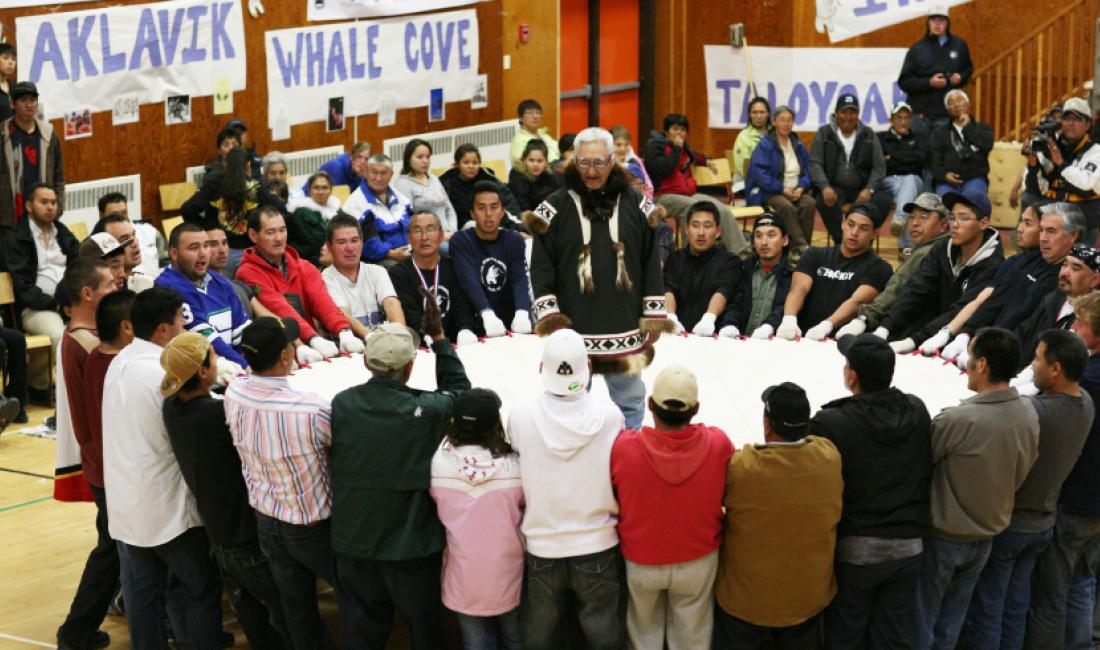
Inuvialuit games
Traditional Inuvialuit games originate from the time when Inuvialuit were semi-nomadic. Played for both fun and survival, these games developed strength, endurance and resistance to pain. The people were tested and prepared for the hard life on the land.
Traditional games were also played when groups from different areas visited and celebrated their culture together. Today, the Arctic Winter Games and the annual Northern Games and the Regional Northern and Dene Games Summit for youth keep the traditions of celebration, gathering and sharing alive.
One of the best aspects of Inuvialuit games is that they can be played anywhere – and by anyone. They require only a small area, either indoors or outside, and very little equipment.
One-Foot High Kick
Starting with either a run-up or walk-up, competitors take off from two feet. While in the air, they attempt to kick a suspended target, usually a roll of seal skin, with one foot and then land on the kicking foot.
Two-Foot High Kick
This kick is similar to the one-foot high kick except competitors attempt to kick a suspended target, usually a roll of seal skin, with both feet and then make a two-foot landing.
Alaskan High Kick
Balance and body control are very difficult to maintain in this jump.
While supporting themselves on the ground with one hand, competitors grasp the opposite foot with their other hand and hold it throughout the kick. After kicking or touching the suspended target, competitors land on the kicking foot.
Knuckle Hop
Although this gruelling event tests competitors’ capacity to endure pain, it is entertaining to watch.
With only knuckles and toes touching the floor, participants compete to travel the longest distance.
Airplane
This test of strength and endurance requires competitors to remain in a rigid, airplane-like position while being carried over a pre-set course. Carriers continue along the course as long as the competitor they are carrying remains in the required position.
Blanket Toss (Nalukataq)
This is probably the most widely recognized Inuvialuit game.
A large group of “pullers” gathers around the edges of a blanket to stretch it out at waist height. After a person climbs into the centre, the pullers rhythmically raise and lower the blanket. On a signal, the blanket is pulled taut and the person in the center is tossed in the air, sometimes more than 6 metres. The person is expected to keep his balance and return upright – a particularly challenging feat if the individual does turns or flips while in the air.
The blanket toss originated with Inuvialuit hunters. Someone who was tossed into the air could spot caribou, whales or other animals in the distance.
Elders also speak of a time when the blanket toss was part of the ceremony to mark the close of a successful whaling season. Whaling captains were first to be tossed. While high in the air, they would throw gifts such as baleen and tobacco to the crowd.
In traditional times, the “blanket” was made of seal or walrus skins. A woven rope edge served as handles. The blanket used today is made from canvas and about three metres across. Many Inuvialuit agree the traditional version has more bounce.